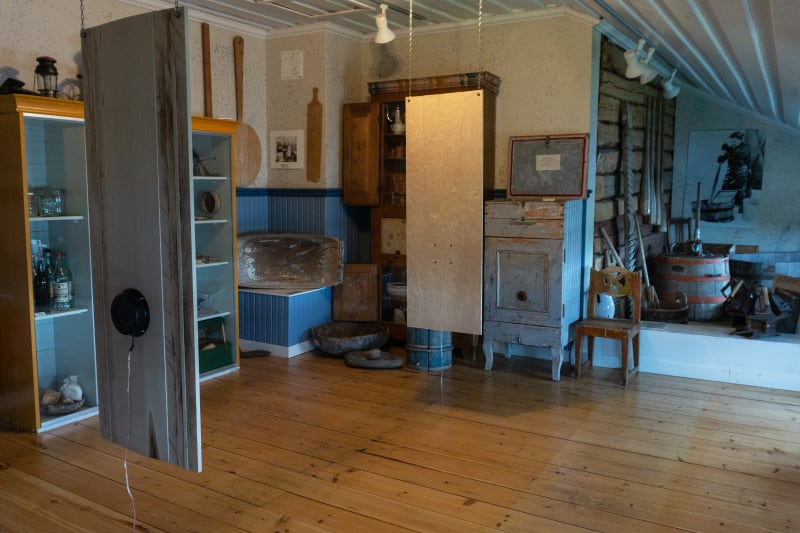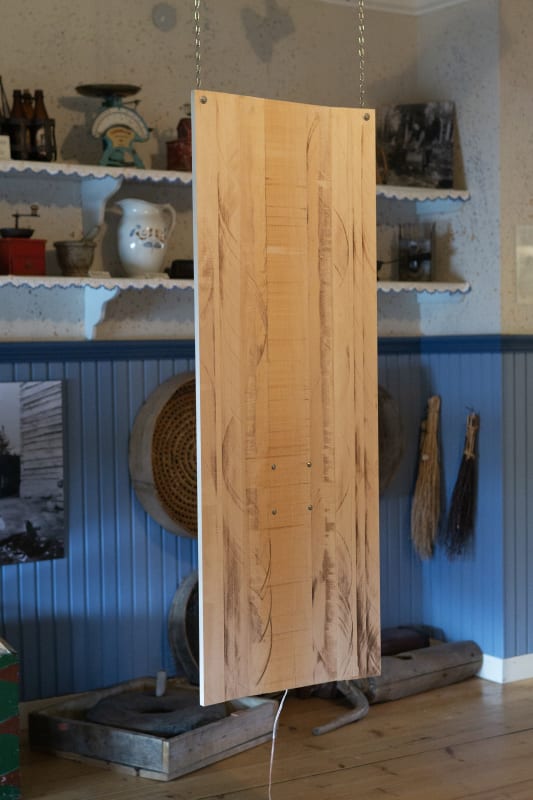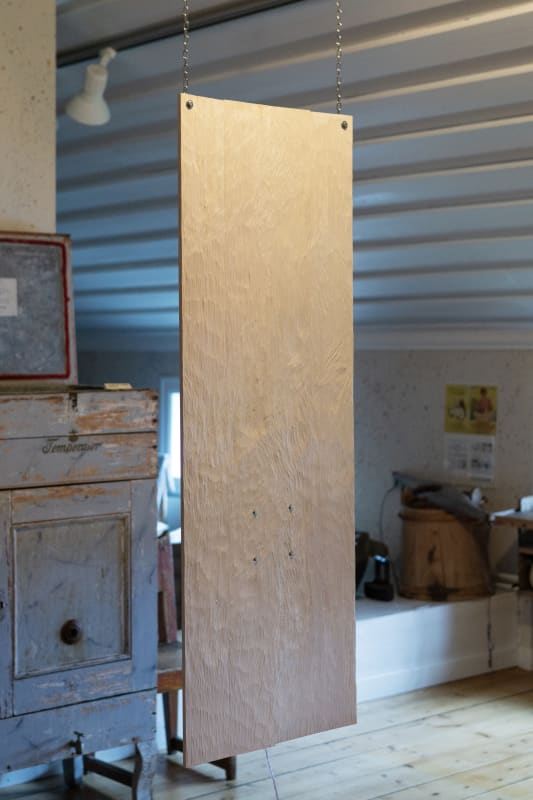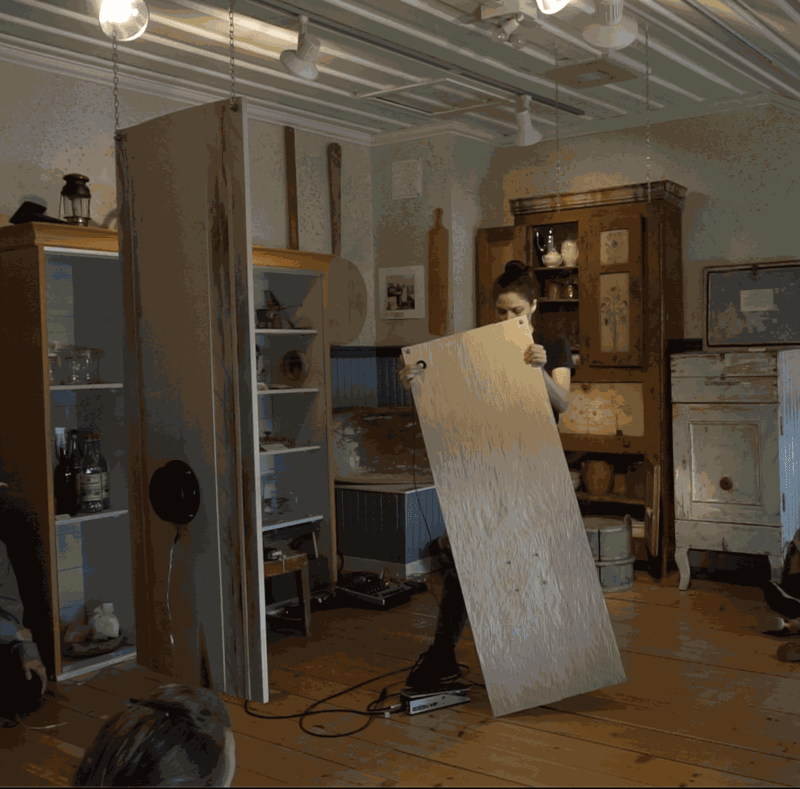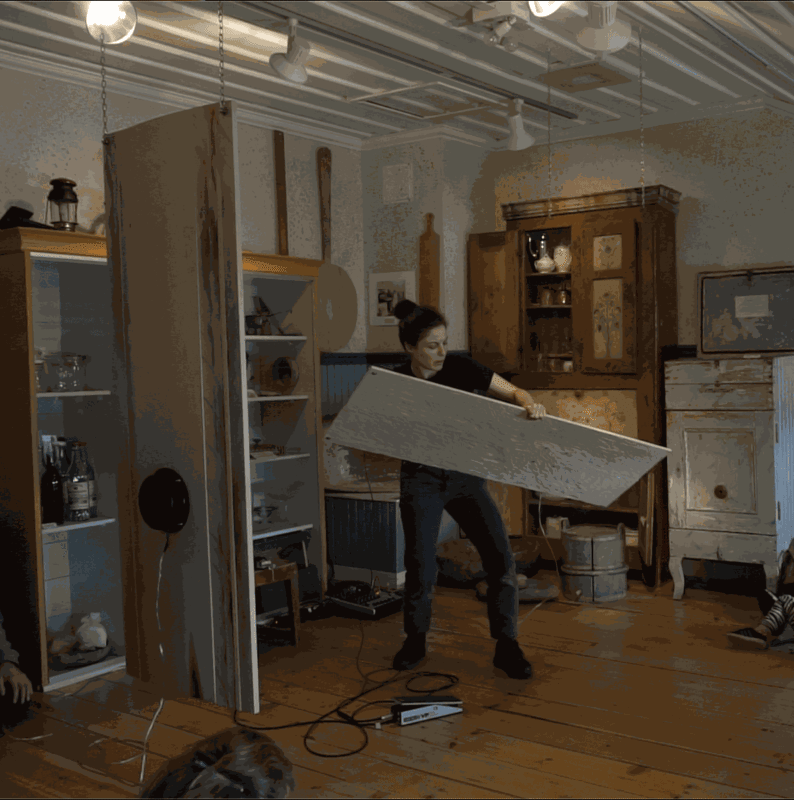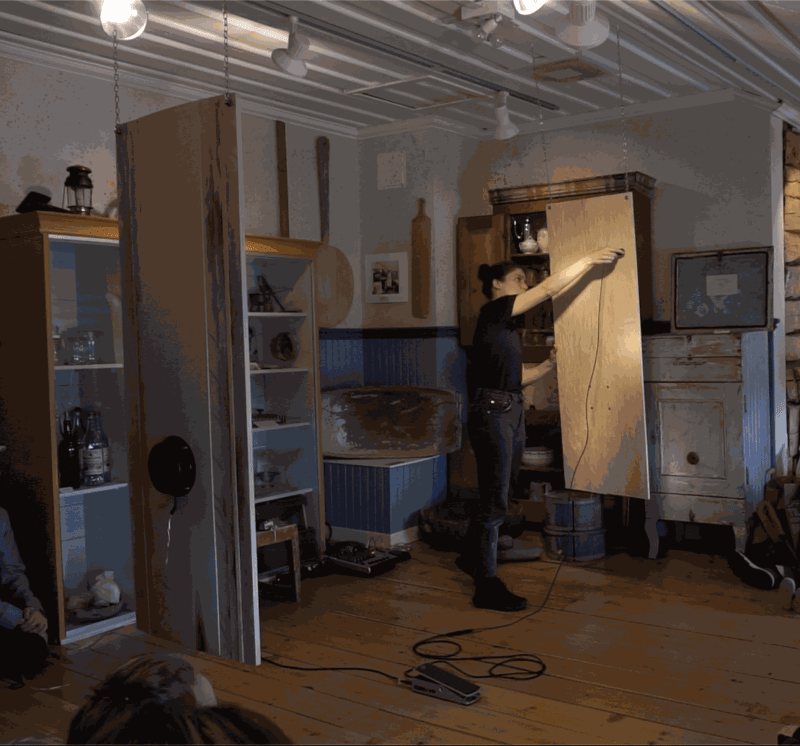Curera: Intuition at Hand
Intuition at Hand introduces artistic works into the collection of the Silvermuseet Arjeplog through a collaboration with Stockholm University's curatorial fellows and Konstfrämjandet Norrbotten. Artists Jordana Loeb, Hedvig Bergman and Tomas Sjögren temporarily exhibit a variety of mediums or technologies within this historical context, and in doing so, complicate our understanding of time and tools.
The works, selected by Ester d'Avossa, Jeanette Gunnarsson and Nathalie Viruly from Stockholm University’s curatorial programme, interact with the anthropological collection and historic display through a similarity of material and storytelling. Bergman exhibits taxidermy and ceramic, Loeb, carved sonic woodworks, and Sjögren, a virtual reality that is both folklore and sci-fi. Seemingly familiar yet contemporary, this dialogue between objects offers a new perspective on the collection that is both celebratory and challenging.
Intuition at Hand focuses on the act of making. It asks what a tool is, who makes it and whether it can be inherently beautiful. Technology is in part an answer to these questions given the centrality of innovation in its definition. And while some would argue that a computer is exemplary, we suggest that the very fibre of the objects housed here and their function to meditate in a harsh world render them equal. Thus, these objects in relation, celebrate a variety of knowledge systems and practices; the feminine, natural and supernatural hand. And in doing so, partially dismember hierarchies of science and culture or art and craft, beauty and function, for their linear histories in this context and beyond.
Thus the axe and the artwork are perhaps the same. What matters is the intuition of the hand and a sense of perspective.
“Silvermuseet Arjeplog is a museum of collective memory. Its artefacts have been “lived in”. They are objects of the home and habit – reckoning with nomadic traditions and home-making in the region. This gritty sensibility, technological by foresight and intent, also carries an inherent artistic quality or softness. Adaptability is transcendent of time and exists as a characteristic of creativity. Ursula Le Guin’s (2004) perhaps says it best in her essay “a rant about technology” when stating:
“We have been so desensitised by a hundred and fifty years of ceaselessly expanding technical prowess that we think nothing less complex and showy than a computer or a jet bomber deserves to be called "technology" at all. As if linen were the same thing as flax — as if paper, ink, wheels, knives, clocks, chairs, aspirin pills, were natural objects, born with us like our teeth and fingers – as if steel saucepans with copper bottoms and fleece vests spun from recycled glass grew on trees, and we just picked them when they were ripe…”
"This sentiment is reflected by these three artists who conceptually question the binary of man, nature and technology, inspired both by the collective history of the museum, and its collection, as well as the anthropological aspects of the territory”, writes Ester d'Avossa, Jeanette Gunnarsson and Nathalie Viruly, curators “Intuition at Hand”.

